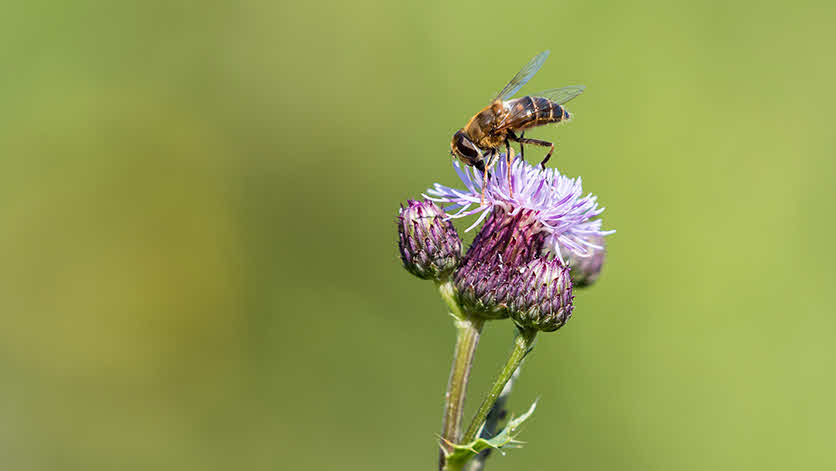
Bees and wasps play a vital role in our ecosystem. They prefer to go about their business quietly and be left alone to work their magic. Occasionally our pets can get a little too curious and end up getting a painful sting so it's useful to know what to do if this happens.
In most cases, there will be some swelling and tenderness at the sting site. Although they can be hard to see, it's best to try to remove the tiny stinger as quickly as possible. The stinger resembles a tiny prickle (not much thicker than a strand of hair). You can then apply a cold compress such as a damp towel to help reduce swelling. Some pets won't let you go near the area of the sting so you can just leave them alone but monitor them closely.
When should you seek veterinary advice?
Pets that are licking a certain area constantly need to be seen by a veterinarian. This may indicate the sting has caused a local and painful reaction. It is also not uncommon for a pet to be limping if they have been stung around the paw and you should arrange for a vet to examine your pet as soon as possible.
Your vet may need to give your pet an antihistamine and/or pain relief injection. Some pets may simply be a bit lethargic or quiet but if you are ever worried about your pet you should arrange a check-up with your veterinarian as soon as possible.
Will my pet need urgent emergency care after a sting?
Occasionally a dog or cat will have an allergic reaction to a sting known as urticaria or hives. This may cause swelling of the face or lumps on the skin. If this happens take your pet straight to your vet.
It is rare but some dogs and cats are severely allergic to bee or wasp stings. They may go into anaphylactic shock from the allergic reaction (and even die) if they don't receive immediate veterinary attention.
Signs your pet needs immediate veterinary attention after a sting include:
- They are having trouble breathing
- The are vomiting within 5-10 minutes of being stung
- They have pale coloured gums
- They collapse or seem non-responsive
Sometimes, a dog or cat might accidentally eat a bee. This can be dangerous if your pet is stung in the mouth or throat as it can cause intense swelling or urticaria . This can lead to problems breathing. If you think your dog or cat may have eaten a bee or even if you happen to find your pet playing with the bee, you should monitor them closely and keep an eye on their breathing. Seek veterinary advice if you are worried.
Ways to help prevent bee stings
To help prevent bee stings, keep your pet away from flowering trees and plants (especially the ground cover and flowering grasses). Always discourage your pet from playing with or chasing bees. Also remove any rotting fallen fruit from your garden, meat products, and uneaten pet food as these are all attractive to certain species of wasps.
If you are ever concerned about your pet, you should always consult your veterinarian for advice.






